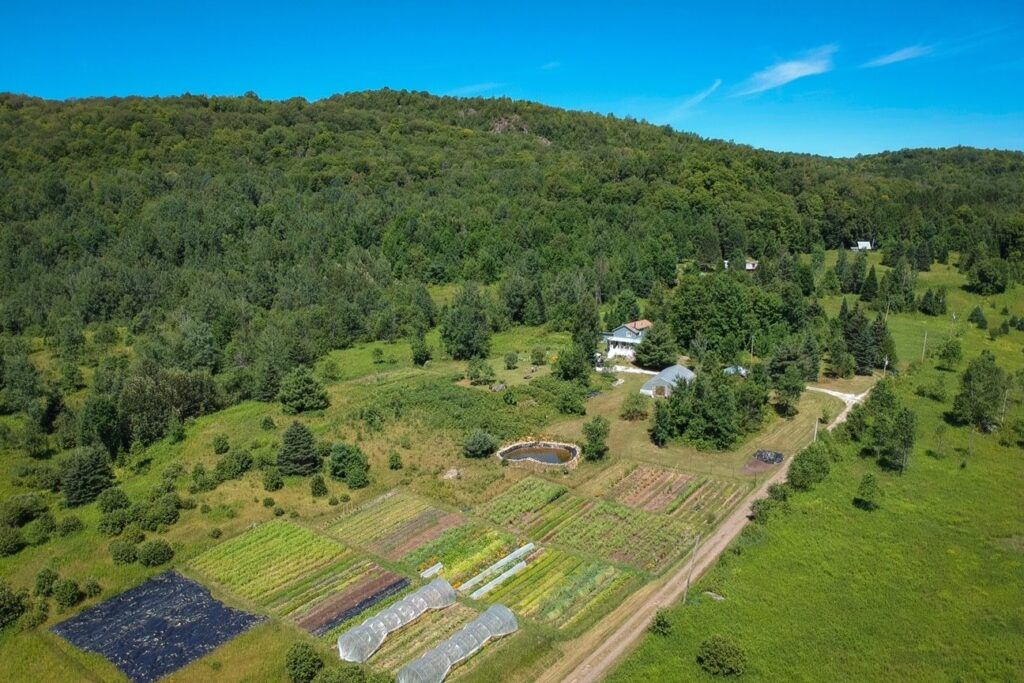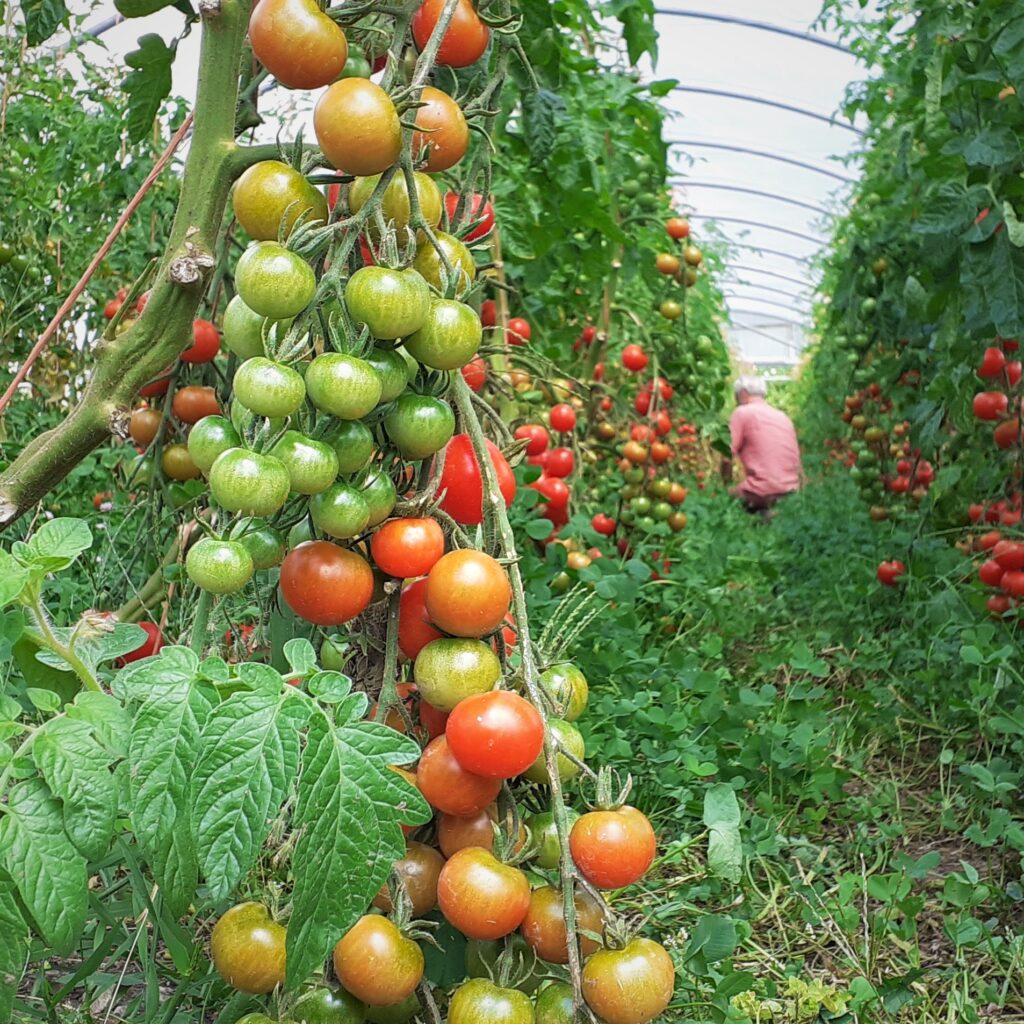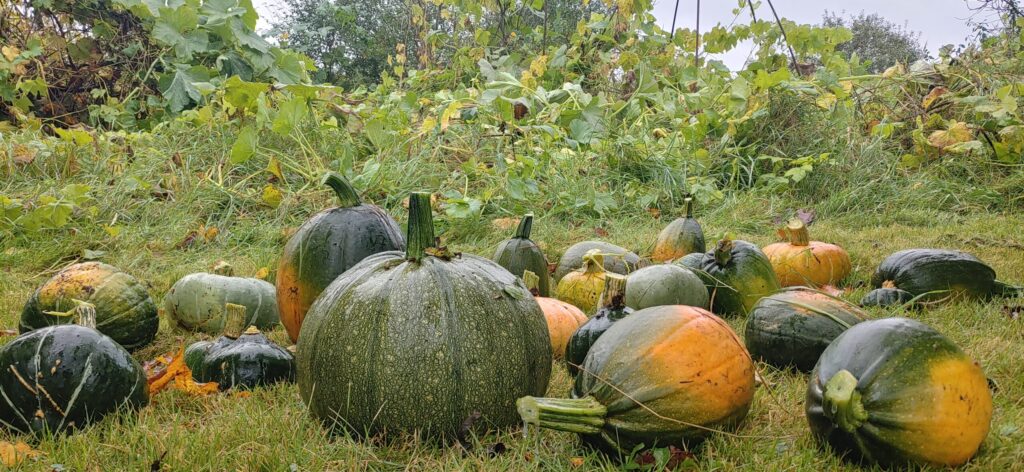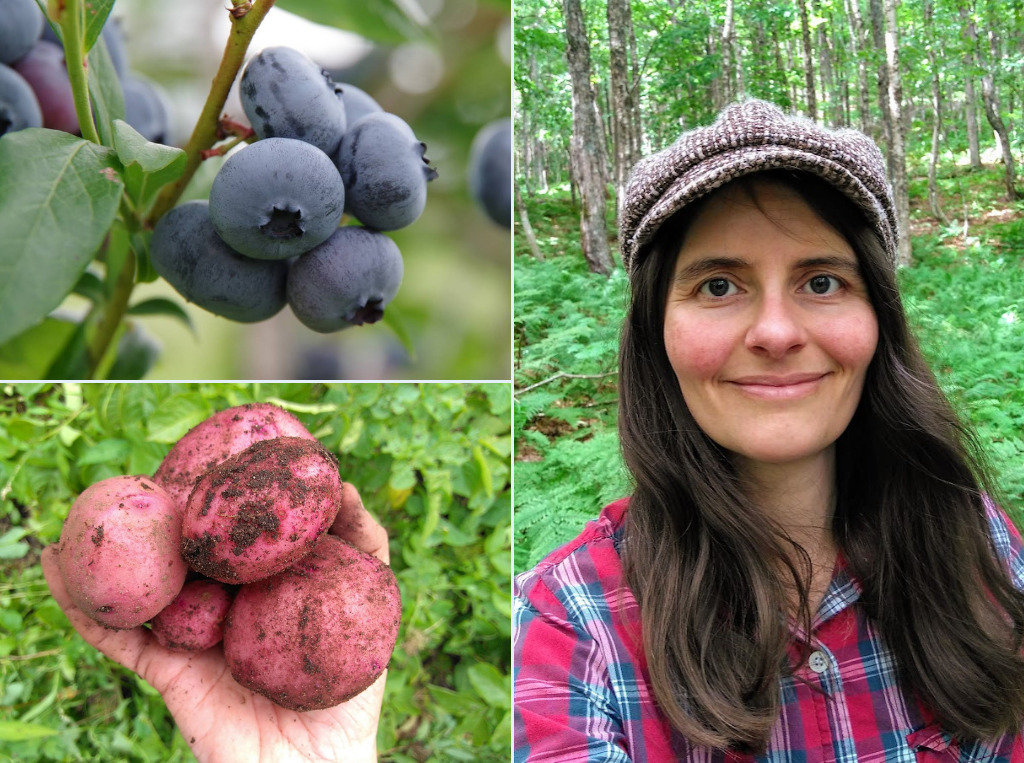‘A Growing Movement’: Q&A with the Co-Founder of the World’s First Veganic Farming Summit
6 Mins Read
Ahead of what’s billed as the first-ever Veganic Summit (November 10-12), which will focus on organic plant-based farming that eschews the use of chemical fertilisers and manure, the event’s co-founder Meg Kelly talks to Green Queen about the use of fertilisers and veganic farming’s relationship to regenerative agriculture and rewilding.
Coined around the 1940s and 50s, veganic farming (also called stockfree farming), is a portmanteau of ‘vegan’ and ‘organic’, referring to organic agriculture that uses plant-based fertilisers, without any chemical inputs or animal byproducts like manure or bone meal.
As explained by the Veganic Summit, a new event founded by Meg Kelly and Stephane Groleau of Canada-based Veganic Agriculture Network and Learn Veganic, veganic farming breaks the link between plant and animal farming, so that plant-based foods can be produced without relying on animal agriculture.
Moreover, it provides a way forward for sustainable agriculture and reduces the risk of contaminants often found in animal byproducts (like antibiotics, heavy metals, E. coli, etc.). Plus, stockfree farming uses less land, water and energy compared to systems bound up with the negative climate impacts of animal agriculture.

The idea is that feeding the soil will give birth to microorganisms that will nourish plants and prolong their longevity. It’s a farming system that’s kinder to animals, human health and the Earth. While not a new concept – farming without domesticating animals has roots in Mesoamerica and Mexican Indigenous agriculture – there isn’t enough awareness about the benefits of such a farming system.
To help drive more awareness, the Veganic Summit will convene experts who will deliver talks and panels to over 1,000 attendees who will also learn how farms and gardens can flourish without animal inputs, and the benefits of veganic techniques – which can be implemented by anyone in their personal gardens – on the soil, biodiversity, environment, and the transition to a fully plant-based system.
We spoke to Meg Kelly about the virtues of veganic farming on rewilding, the use of fertilisers, and its association with regenerative agriculture.
Green Queen: What is veganic farming’s footprint? Do you have data on how many farms worldwide or how much land globally is making use of veganic farming principles?
Meg Kelly: Veganic farming is still a small and growing movement. Some veganic farms have chosen to add themselves to veganic farm maps in North America and Europe. However, this likely represents only a small percentage of veganic farms (and many farms are likely farming veganically or close to it without even knowing it).
The veganic farming movement is most prevalent in the UK (where the Vegan Organic Network was founded in 1996), Canada and the US (where the Veganic Agriculture Network was founded in Canada in 2008), and Europe (where the Biocyclic Vegan movement has been active for decades). There is also the natural farming/Japanese natural agriculture movement in Japan that uses plant-based fertility techniques. This movement has two branches, one founded by Masanobu Fukuoka and the other founded by Mokichi Okada.
Meanwhile, several different words are used to describe plant-based organic growing: ‘veganic’, ‘vegan organic’, ‘stockfree’, ‘stockfree organic’, and ‘biocyclic’. Three of these currently have certification programmes: Stockfree Organic (UK), Certified Veganic (North America) and Biocyclic (primarily Europe).
[In terms of efficiency,] Iain Tolhurst’s farm in the UK produces food 90% more efficiently than typical supermarket produce.

GQ: Is all stockfree farming organic by default, or can (fossil-fuel-derived) synthetic fertilisers be used?
MK: Veganic farming and gardening is organic by default, and does not use synthetic fertilisers. Veganic uses plant-based fertilisers (for example, vegetable compost, green manures, living mulch, alfalfa, chipped branch wood, kelp, etc.).
Veganic farmers may occasionally use mineral inputs that are allowed in organic farming (like rock dusts), but this is generally minimised and plant-based methods are preferred. Not all veganic farms are certified organic, though they use organic techniques.
GQ: Regenerative agriculture has become increasingly popular over the last decade. What is its relationship to veganic farming?
MK: Fundamentally, the word ‘regenerative’ refers to regenerating soil. This can be accomplished in many ways, including minimising soil tillage (by having a no-till or low-till farm); adding biomass to the soil, such as compost; having the soil constantly covered with living plants, like cover crops and living mulch; having a wide biodiversity of plants, including perennial plants; and incorporating agroforestry, such as using chipped branch wood to regenerate the soil.
These are different principles that are commonly used in regenerative agriculture, and these techniques can all be veganic. There are many farms that are practising regenerative veganic agriculture, meaning they are focused on regenerating their soil using veganic techniques.
Another technique that is often used in ‘regenerative agriculture’ is rotational grazing of livestock, and unfortunately, this is the way that the word ‘regenerative’ has been primarily portrayed in farming circles and the public eye, to the point that people assume that cows are a fundamental component of regenerative farming.
In short, veganic farming has a significant focus on caring for the soil, building the organic matter in the soil, and nurturing soil life. We accomplish this without any cows or other livestock, which avoids the ethical and land use issues associated with animal agriculture. Some veganic farmers may reclaim terminology like ‘regenerative veganic farming‘, and others may shy away from using the word ‘regenerative’ since it has now become so closely associated with livestock grazing.

GQ: Does veganic farming go hand-in-hand with rewilding?
MK: Veganic agriculture can contribute to rewilding in two main ways.
First, by actively adding biodiversity settings on the farm: veganic farmers tend to practice some degree of rewilding, habitat protection, and/or habitat creation on their farmland. This can include protecting existing natural areas on the farmland. And also adding trees, beetle banks, wildflowers, etc. Creating or preserving habitat for wildlife is a common part of veganic agriculture and is highly encouraged.
Second, by using less land to produce food, we can ultimately free up land for rewilding. Veganic farms use less land overall than farms that rely on animal-based fertilisers. Many veganic farmers (like Tolhurst and Helen Atthowe in the US) produce all of their own fertilisers right on their farm (using green manures and living mulch) without importing any, whereas a non-veganic farm that relies on buying fertilisers like chicken manure, for example, ultimately has a significant number of “ghost acres – extra acres of land that were used to grow the chicken feed, house the chickens, etc., which greatly increases the land footprint of farms that rely on animal agriculture.
A widescale uptake of veganic agriculture could lessen the amount of land used for agriculture, and free up space for rewilding. Interestingly, the non-profit Ecology Action [which isn’t a vegan organisation, but typically practices plant-based agriculture] has spent several decades researching how food can be grown on as small a surface area as possible, while still improving soil qualiy, so that significant areas of land could be freed up for wildlife. Its conclusion: farming using plant-based techniques (without reliance on manure) has the smallest footprint and the greatest potential for freeing up space for wildlife.
The Veganic Summit is a virtual event and is free to attend, with an additional all-access pass available for $33.




